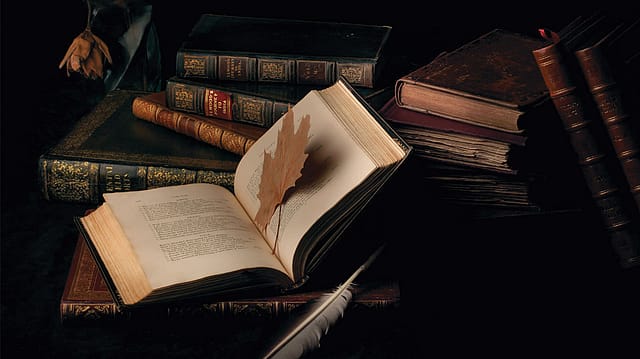Judge a book by its lover
ADVERTISEMENT

OF AN EVENING, ALOK NANDA likes to pour himself a preferred claret and thumb through one of his thick, twenty-four-by-eighteen inch, leather-bound, encyclopaedic volumes of Parliamentary Papers: Reports, etc. (East India Company) that were submitted to the British Parliament in 1812. This is more than bedtime reading; most of the books in his collection are centuries old and collectively worth a fortune. “This is a very personal hobby,” he explains. “It’s rarefied and a bit like collecting old wines.” Rare book collections aren’t typically displayed like those of fine art or sculpture. Nanda, who owns design and branding consultancy Alok Nanda & Company in Mumbai, is part of a growing league of bibliophiles who prefer to keep a low profile.
“Collecting is not a static occupation. It evolves,” says Simon Brandenburger, former head of the rare books section of Bonhams, Britain’s third-largest auction house. (See accompanying story on Indoislamica.) “Usually people start with the visual and then move to other forms. At the moment in India, collectors have moved from just paintings to books of great value which have images, and then it will be books, with less images, valued for their text, including first editions.”
Subbiah Yadalam, founder of the Rare Book Society of India, says, “Most rare book collectors are quiet, elusive, and well-read people who you don’t bump into often.” However, these elusive people haven’t hesitated to band together: Since its inception in 2004, the society has close to 16,500 members on Facebook.
December 2025
The annual Fortune 500 India list, the definitive compendium of corporate performance, is out. This year, the cumulative revenue of the Fortune 500 India companies has breached $2 trillion for the first time. Plus, find out which are the Best B-schools in India.
Yadalam first became interested in old books when he discovered rare books on the castes and tribes of South India in the Bangalore Club library. Hunting for similar books around the world, he came across a Sotheby’s catalogue which referred to the Robert and Maria Travis Collection of 150 rare Indian books. In 2005, the collection sold for more than £1 million (Rs 8.78 crore), which made him aware of the value of rare books. His own collection includes first editions of The European in India by Charles D’Oyly, published in 1813, (valued at Rs 2.25 lakh) and The Costume of Hindostan from 1807 by François Balthazar Solvyns (valued at Rs. 2.5 lakh). Yadalam says that although art is more popular with collectors, awareness of rare books is growing. “Tonnes of books in India have been printed by European houses for over 300 years. There’s a wealth of antiques floating out there.”
Most dealers don’t restrict themselves to sourcing rare books from India. Rajiv Jain, director of Southex Books and Prints, New Delhi, says he participates in European and other global auctions to cater to his customers. According to him, Indian collectors typically favour colonial publications and classic Indian authors. For example, he sold a signed copy of Rabindranath Tagore’s Gitanjali for Rs 1.4 lakh a few years ago.
The value of an antique book is primarily determined by the condition it is in. Nanda decries the notion that old books must be in tatters or have pinholes. He says it is necessary to ensure that the dust jacket of a book (where applicable) is in pristine form to preserve its value. Dilnavaz Mehta, owner of antiquarian bookshop Rare Finds in Mumbai, concurs. She cautions budding collectors that maintaining old books is as time consuming as vintage automobiles. “You need to store books on their backs, not on their spines, to decrease pressure and wear and tear,” she says. Bookmarks such as pressed leaves, ribbons, cards, and pressed flowers leave impressions on pages and can accelerate acidification. Equally, plastic covers are avoidable as laminating old books causes undesirable bends and creases.
Mehta, whose inventory includes an illustrated first edition of John Milton’s Paradise Lost, and a three-volume set of The Thousand and One Nights (The Arabian Nights) from 1859, says that for a number of collectors it’s not just an intellectual pursuit or an alternative investment. “A lot of the time they are interested in researching their ancestors and tracing their roots.”
For Nanda, it was initially about locating unique typefaces that he could emulate in his work. This led him to build a library that today hosts hundreds of books. His collection, which houses first editions of the Jeeves and Wooster series by P.G. Wodehouse, was acquired from a variety of sources, including Maria Brothers Bookstore in Shimla, Southex Books and Prints, and roadside stalls on Bentinck Street in Kolkata. These days, however, people are more aware of the value of the books they are clearing out of their homes, as are roadside dealers. “Five to 10 years ago, you could unearth a limited edition book you never thought you’d see on a street, and buy it for a few rupees,” he says.
